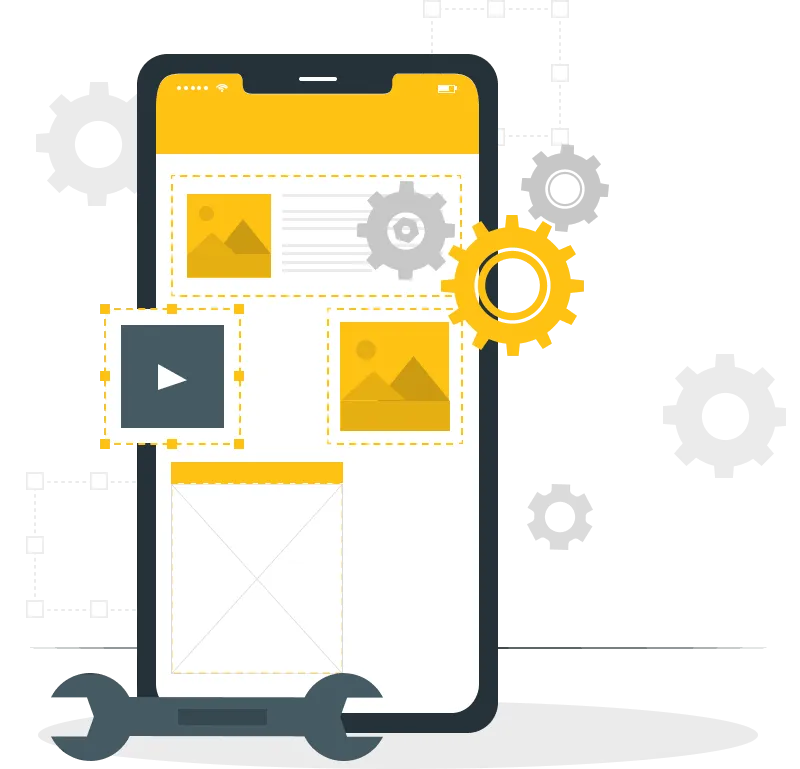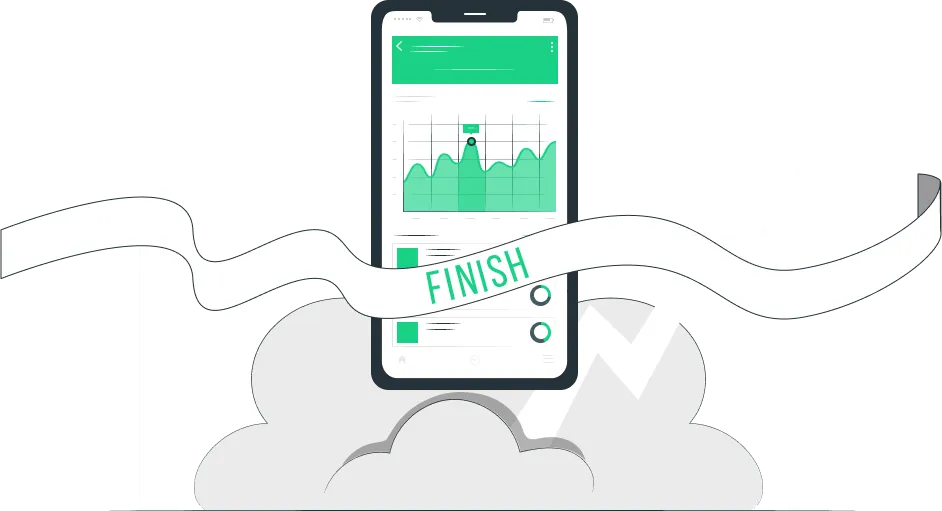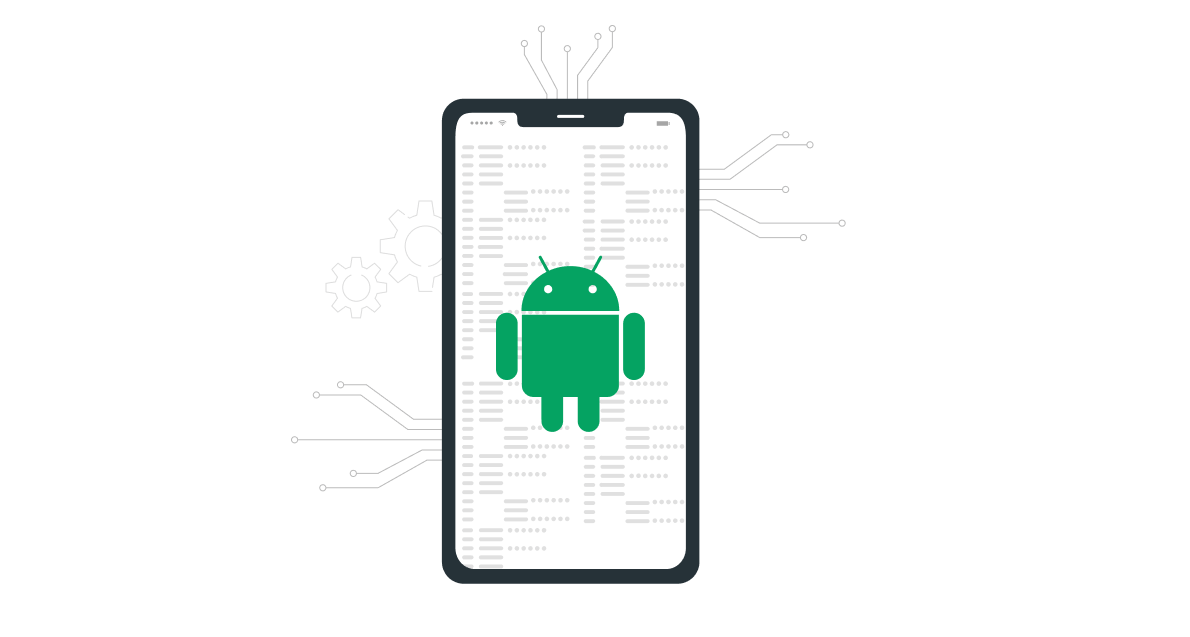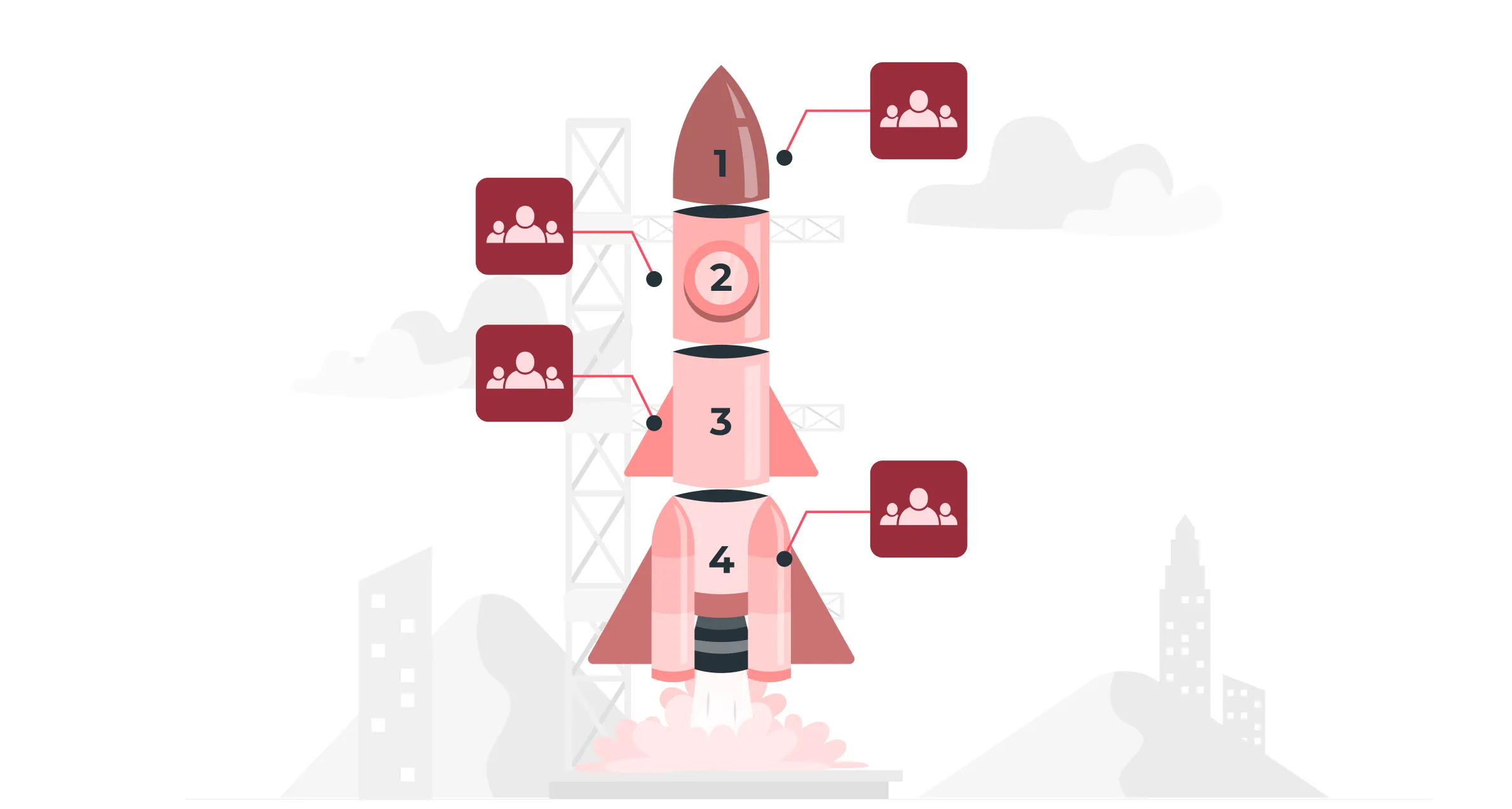Development of Mobile Applications for Android
Android stands as the most renowned operating system for smartphones and various other mobile devices. Beyond its widespread use on smartphones and tablets, Android powers TVs, cars, portable gaming consoles, and numerous devices utilized in industries. Developing mobile applications for Android devices has become a prevalent practice across numerous sectors, from large corporations to startups and individual projects, aiming to streamline user processes.
Major organizations such as banks, mobile operators, online stores, and social networks invest in Android app development for both internal use by employees and external use by customers, sometimes tailoring apps to specific departments.
Manufacturing companies, such as compressor manufacturers, oil and gas plants, or agricultural enterprises, leverage Android mobile applications for tasks like scanning machine barcodes, submitting equipment inspection reports, and implementing training programs for machinery operation.
Startups rely on Android apps to digitally convey their ideas, whether it's a time management tool, a prayer book, a holiday planning platform, a referral system, or a photo generation system based on user profiles.
Individuals often seek to digitize their hobbies or businesses to make them accessible to their audience. For instance, artists may create online galleries, seamstresses may establish online stores featuring customizable clothing, and musicians may develop alarm clock apps or games instead of traditional merchandise.
These examples represent just a fraction of the diverse applications within the Android platform, highlighting its versatility and widespread adoption. In the following discussion, we'll dive into the specific business tasks that can be addressed through custom Android applications, along with the unique considerations involved in their development.

Which Companies Benefit from Having Their Own Mobile App?
A mobile application serves as a potent tool for any modern business. Companies that find particular utility in developing their own app include:
- Online Retailers: Mobile apps facilitate product browsing, purchases, and access to discounts and bonuses.
- Service Providers: Apps enable users to request services, contact specialists, and track order statuses.
- B2B Enterprises: Apps support interaction with partners, dealers, and suppliers.
- Media Outlets and Blogs: Mobile apps expand user reach and offer a convenient platform for publishing news, articles, and videos.
- Educational Institutions: Apps facilitate distance learning, provide access to schedules, homework assignments, study materials, and more.
- Financial Organizations: Banks, payment systems, and investment firms offer apps for transactions, expense tracking, and financial management.
- Delivery Services: Apps allow users to monitor order statuses and receive delivery notifications.
- Fitness Centers: Apps offer features such as class sign-ups, progress tracking, and personalized recommendations.
The widespread adoption of mobile services has made app development a popular choice for businesses seeking to enhance their online presence and create effective projects.
How to Create Android Apps: Different Approaches
Embarking on the journey of developing Android mobile apps for users can be a daunting task. However, there are several fundamental approaches to achieve this:
- Native Development: This method involves utilizing Java or Kotlin programming languages in conjunction with Android SDK and Android Studio to develop applications specifically for the Android platform. In native development, the majority of the project is coded by the programmer without reliance on third-party resources. This approach offers greater scalability and easier project maintenance.
- Cross-Platform Development: Cross-platform development entails leveraging pre-existing frameworks and libraries designed for cross-platform development. This approach enables developers to create a single codebase for both Android and iOS applications, thereby saving development time. However, there are limitations in customization compared to native development.
- Use of Web Technologies: Another option is to utilize web technologies such as Apache Cordova or Capacitor to create mobile applications. While this approach allows for rapid development and deployment, it may not be suitable for large-scale projects due to certain limitations, such as challenges in working with the file system and dependency on plugins for extended functionality. However, for smaller projects that do not require long-term maintenance, it can be a viable solution. Each approach to developing applications for cell phones and Android devices has its own advantages and characteristics. The choice of the most suitable approach depends on factors such as the project's scale and long-term maintenance requirements. It's essential to evaluate these factors carefully before embarking on development to ensure the success of the project in the months or years ahead.
Key Components of Android Application Development
Developing applications for Android mobile devices involves various essential components, including:
- Programming Language: The primary language options for Android development are Java and Kotlin. While Kotlin is increasingly favored for new projects, Java remains widely used for coding essential features.
- Android SDK: The Android Software Development Kit (SDK) is indispensable, providing a comprehensive set of templates and libraries offered by Google to implement mobile application functions via code. The SDK encompasses APIs for user interfaces, network queries, databases, and graphics.
- Integrated Development Environment (IDE): Android Studio serves as the official IDE for Android application development. Built upon IntelliJ IDEA, it offers a suite of tools for creating, debugging, and testing applications.
- User Interface and Screen Views: Crafting a user interface requires adherence to each mobile operating system's specific guidelines. In Android development, knowledge of these guidelines is applied in designing screen layouts (layouts), widgets, images, color schemes, and styles. Android UI can be constructed both visually using XML markup for layouts and programmatically using Java or Kotlin.
- Business Logic and Application Features: Android OS presents unique features and limitations that must be considered during application ideation and development. It's essential to verify the feasibility of implementing an idea using development tools and ensure compliance with Google Play's rules. Additionally, adherence to Android OS's available features and recommendations is crucial.т ли это нарушать правила Google Play. Также следует учитывать доступные возможности и рекомендации самой операционной системой Android.
Developing mobile applications for the Android operating system is a multifaceted endeavor requiring the expertise of qualified professionals, utilization of professional tools, and a methodically organized problem-solving process.

Steps in the Process of Developing a Mobile Application for Android Devices
The development of an Android app involves several key steps:
- Research and Planning: This initial phase involves market research to understand user needs and preferences. It's essential to define the main functions of the app and outline a basic plan of action.
2. Designing: The design stage involves creating technical documentation and a prototype of the mobile application. This prototype should visually represent all the main functions and features of the app.
3. Development: During this phase, the development team writes the program code to implement the application's logic, designs the user interface, establishes network interactions with servers and databases, and integrates third-party libraries and frameworks to enhance functionality and accelerate development.
4. Testing of the Mobile Application: The testing team rigorously evaluates the mobile application to ensure that it aligns with the documented requirements, prototype, and design specifications.
5. Debugging and Optimization: Following the testing phase, developers address any identified issues, conduct code refactoring as needed, and use specialized debugging tools to analyze and optimize the application's performance.
6. Deployment: Developers prepare the application for release by setting up a Google Play account and configuring the app for publication in the app store.
Some of these steps may require multiple iterations throughout the development process. Larger projects demand greater attention to design, testing, and debugging. Additionally, launching an advertising campaign and analyzing user behavior post-launch are essential steps in promoting the app's success. If new requirements emerge during post-launch analysis, the development team may need to revisit the design phase and adjust the work plan accordingly.

Launching the Application
Once the development and testing phases are complete, the next step is the launch stage. This involves preparing the project for publication, including tasks such as creating keys and certificates, setting restrictions on the availability of the application for certain countries and users, and preparing text and graphic materials for the application's page in the Google Play Store. These actions shape the initial impression users will have and influence their decision to install the mobile application on their Android device.
Publishing the Application on Google Play
Before publishing an application on the Google Play service, developers need to register a developer account on the Google Play Console service. Subsequently, they upload the application to the Google Play Console, providing essential details such as title, description, images, and pricing. Once the app is submitted for verification, it undergoes scrutiny by Google's service to ensure security, quality, and compliance with content guidelines. Upon successful verification, the app becomes publicly available for download and installation from the Google Play Store.
Conclusion
Android app development is a challenging yet highly creative process that demands meticulous planning at every stage and effective coordination among all team members.







